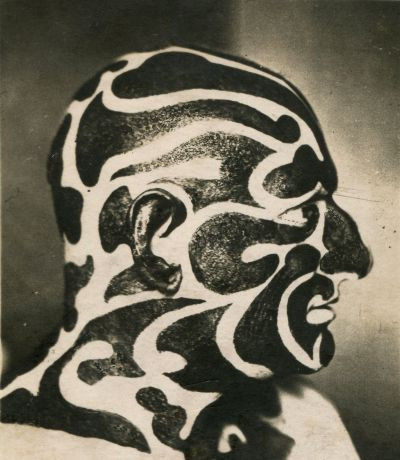Anchors & Eagles: The Legacy of American Traditional Tattooing
- thebluebloodstudios

- Mar 19
- 4 min read
Anchors Away: The Enduring Legacy of American Traditional Tattooing
American Traditional tattooing, also known as Old School, is more than just tattoos—it's an enduring art form with a rich and storied history. From the busy harbors of the early 20th century to modern day tattoo studios, this style has captivated and evolved, leaving an indelible mark on the world of current day tattooing.

From Sailors to Kings: The Roots of a Classic
The story begins with sailors. In the late 1800s and early 1900s, a time of burgeoning industrialization and global exploration, tattoos became a way for these seafarers to commemorate their journeys, mark significant milestones, and ward off bad luck. Classic designs like ships, anchors, swallows, and roses were born from this era. Each symbol carried a specific meaning: swallows signified a sailor's return home, anchors represented stability, and ships chronicled epic voyages. These tattoos were often created in the rough-and-tumble tattoo parlors found in port cities, reflecting the adventurous and often perilous lives of the sailors.
Early masters laid the groundwork for the style’s enduring appeal. George Burchett, who began his professional tattooing career around 1900, and even tattooed royalty, helped elevate the craft to an art form in the early 20th century. Later, Norman "Sailor Jerry" Collins, born in 1911 and starting his tattooing career in the 1930's, emerged as a pioneer, refining techniques and standardizing designs. Jerry's bold lines, vibrant colors, and iconic imagery set the foundation for what we now recognize as American Traditional. His legacy was carried on by Don Ed Hardy, who was heavily influenced and mentored by Sailor Jerry, and who further popularized the style and expanded its reach. Lyle Tuttle, known for tattooing Janis Joplin, helped bring tattooing into the mainstream in the mid-20th century.
Across the Pond: American Traditional in Europe
As sailors traveled the world, so did their tattoos. The style made its way to Europe, where artists like Tattoo Peter in the Netherlands (Amsterdam) and Herbert Hoffmann in Germany (Hamburg) embraced and adapted it. These artists helped spread the influence of American Traditional, ensuring its place in the global tattoo landscape.
Beyond the Harbor: Symbolism and Significance
Beyond sailors, American Traditional tattoos found meaning in other subcultures. Prisoners, for example, used tattoos to signify their experiences and affiliations. Even royalty, as mentioned with Burchett, embraced the art, blurring the lines between social classes.
Modern Masters and Timeless Techniques
Today, American Traditional remains a staple in tattoo studios worldwide. Artists continue to honor the style's heritage while adding their own contemporary twists. The hallmark characteristics—bold lines, saturated colors, and heavy shading—remain, but artists now experiment with new interpretations of classic designs.
The thickness of the lines, the darkness of the shading, and the specific approach to color are all integral to maintaining the authenticity of the style. Techniques like the use of multiple needles for bold outlines and the layering of saturated colors over heavy black shading are fundamental to the style. While single needles are used to achieve very fine lines, and on occasion could be used by a modern traditional artist for a specific look, it is not a hallmark of the traditional style. Modern artists respect these elements while pushing the boundaries of creativity. They may incorporate modern themes or refine classic designs, but the core principles of American Traditional remain.
A Modern Twist at Blue Blood Studios: Taco Joe & Cristian Vilella
Right here at Blue Blood Studios, we’re proud to showcase artists who embody the spirit of American Traditional. One such artist is Cristian Vilella. Cristian brings a contemporary edge to Old School tattooing, infusing classic designs with his unique artistic vision. His work demonstrates a deep respect for the tradition while offering a fresh perspective.
Cristian's use of bold lines, rich colors, and meticulous shading reflects the foundational elements of American Traditional. His ability to modernize classic motifs while maintaining their integrity makes his work stand out. Whether it’s a classic ship design with a modern twist or a traditional rose with a contemporary flair, Cristian's tattoos are a testament to the enduring appeal of this iconic style.
Another artist at Blue Blood Studios who focuses on traditional work is Taco Joe. He brings a unique perspective by blending American Traditional with influences from his Bornean heritage. This fusion, combined with his incorporation of skateboarding imagery, results in a style that is both deeply rooted in tradition and refreshingly modern. Taco Joe's ability to seamlessly weave these diverse elements while maintaining the core principles of American Traditional showcases his versatility and artistic vision.
American Traditional tattooing is a living, breathing art form that continues to evolve. From its humble beginnings on the high seas to its place in modern studios, the style's enduring appeal lies in its timeless designs, bold techniques, and rich history. Visit Blue Blood Studios to witness the modern evolution of this classic art form, and see firsthand the work of Cristian Vilella and Taco Joe.






Comments